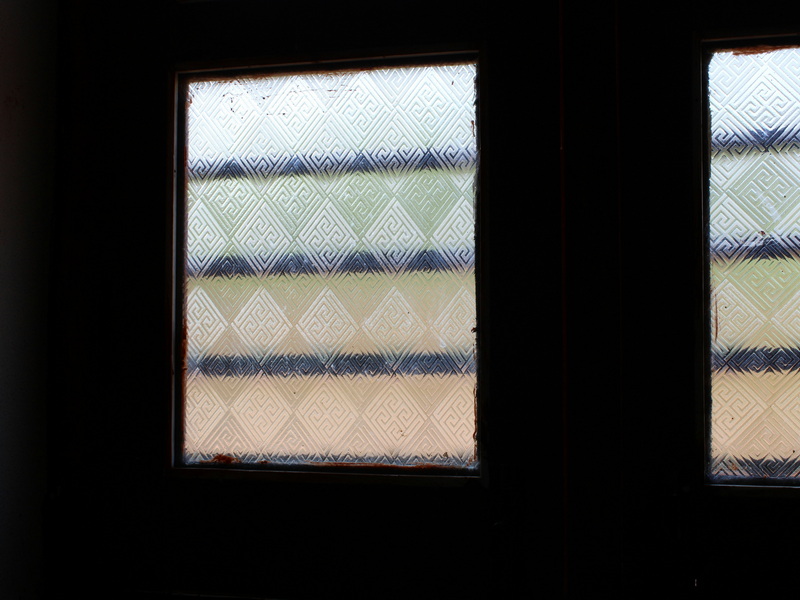English 




Views: 222 Author: Astin Publish Time: 2025-01-19 Origin: Site



Content Menu
● Understanding Heat Transfer Through Windows
>> Reflectivity and Emissivity
● Benefits of Using Aluminum Foil on Windows
● How to Use Aluminum Foil on Windows
>> Step-by-Step Installation Guide
● Potential Drawbacks of Using Aluminum Foil
● Case Studies and Real-Life Applications
● Alternative Solutions for Keeping Heat Out
● FAQ
>> 1. Can aluminum foil really keep heat out?
>> 2. Is it safe to use aluminum foil on double-pane windows?
>> 3. How long does aluminum foil last when used on windows?
>> 4. Does covering windows with aluminum foil block natural light?
>> 5. Are there any fire risks associated with using aluminum foil?
As temperatures soar during the summer months, homeowners often seek effective and affordable ways to keep their homes cool. One popular method that has gained traction is using aluminum foil on windows. This article explores the effectiveness of aluminum foil in blocking heat, its installation methods, benefits, potential drawbacks, and alternative solutions.

Windows are typically poor insulators, allowing heat to enter homes through conduction and radiation. When sunlight hits a window, it passes through the glass and transforms into thermal energy, raising indoor temperatures. This phenomenon can lead to increased reliance on air conditioning systems, resulting in higher energy bills.
1. Conduction: This is the transfer of heat through direct contact. For example, when the sun heats the window glass, that heat can be conducted into the room.
2. Convection: This involves the movement of heat through fluids (liquids or gases). Warm air rises and cool air sinks, creating air currents that can affect indoor temperatures.
3. Radiation: This is the transfer of heat in the form of electromagnetic waves. Sunlight is a primary source of radiant heat that enters homes through windows.
Aluminum foil is known for its excellent reflective properties; it can reflect up to 95-98% of radiant heat. When applied to windows, aluminum foil acts as a barrier that prevents solar radiation from entering a home, significantly reducing indoor temperatures.
- Reflectivity: Aluminum foil reflects a significant portion of radiant heat away from the surface. Its shiny side is particularly effective at bouncing back solar radiation.
- Emissivity: This refers to how well a material emits thermal radiation. Aluminum foil has low emissivity, meaning it does not absorb much heat; instead, it reflects it.
1. Cost-Effective Solution: Aluminum foil is inexpensive and readily available at most grocery stores, making it an accessible option for many homeowners looking to save on cooling costs during hot weather.
2. Easy Installation: Applying aluminum foil is straightforward; it can be cut to size and affixed with tape or other adhesives.
3. Energy Efficiency: By reflecting heat away from living spaces, aluminum foil helps maintain a comfortable indoor temperature, leading to reduced energy consumption and lower utility bills.
4. Protection Against UV Rays: Aluminum foil can block harmful ultraviolet (UV) rays that can fade furniture and flooring, providing an added layer of protection for interior spaces.
5. Temporary Solution: Foil can be easily removed once the heat wave passes, making it a flexible option for seasonal use.

To maximize the benefits of aluminum foil on windows, proper application is crucial:
1. Choose the Right Side: Ensure that the shiny side of the foil faces outward; this maximizes its reflective properties.
2. Cut to Size: Measure your windows accurately and cut the aluminum foil accordingly to ensure a snug fit without gaps that could allow heat transfer.
3. Secure the Foil: Use tape or adhesive to secure the edges of the foil to prevent it from peeling off due to wind or moisture.
4. Consider External Application: For optimal results, apply the foil to the outside of the window rather than the inside. This prevents heat from entering before it can be reflected away.
5. Use Cardboard Backing: For added stability and insulation, attach the aluminum foil to cardboard before placing it on the window. This helps keep it in place and provides an extra barrier against heat transfer.
6. Seal Edges: Ensure that all edges are well-sealed with tape to prevent any gaps where heat could enter.
While using aluminum foil has many advantages, there are also some considerations:
1. Aesthetic Concerns: Aluminum foil may not be visually appealing and could draw unwanted attention from neighbors or passersby.
2. Window Damage Risks: If applied incorrectly (especially on the inside), it may lead to overheating and cracking of window panes due to trapped heat between the glass and the foil.
3. Durability: Aluminum foil is thin and can develop holes or tears over time, reducing its effectiveness as an insulator.
4. Residue Issues: Some users report sticky residue left behind after removing aluminum foil from windows, which can be difficult to clean off.
5. Limited Longevity: Regular kitchen-grade aluminum foil may not withstand prolonged exposure to outdoor conditions; using heavy-duty or thicker varieties can extend its lifespan significantly.
Many homeowners have successfully implemented aluminum foil as part of their cooling strategies:
- Urban Apartment Dwellers: In densely populated urban areas where air conditioning is often too expensive or impractical due to space constraints, residents have found that applying aluminum foil to their south-facing windows significantly reduced indoor temperatures during peak summer months by as much as 10°F (5°C).
- Eco-Friendly Families: Families committed to sustainable living have reported lower energy bills after using aluminum foil in combination with other eco-friendly practices like planting shade trees outside their homes or installing solar panels.
If aluminum foil does not appeal to you or if you seek more permanent solutions, consider these alternatives:
1. Reflective Window Films: These films are designed specifically for use on windows and can effectively reflect heat while allowing light to pass through. They come in various shades and levels of reflectivity.
2. Blackout Curtains: Investing in quality blackout curtains can provide effective light blocking without compromising aesthetics or risking damage to your windows.
3. Thermal Drapes: These specially designed curtains are lined with insulating materials that help regulate indoor temperatures while providing privacy and light control.
4. DIY Solutions: Consider using cardboard covered with reflective materials like Mylar or other insulating materials that offer better aesthetics while still providing insulation benefits.
5. Plant Shades: Using outdoor plants or trees strategically positioned near windows can naturally block sunlight and reduce indoor temperatures without any visual clutter.
Using aluminum foil on windows is an effective method for reducing indoor heat during high-temperature periods. Its high reflectivity helps bounce back radiant heat before it enters your home, making it a practical solution for many homeowners seeking relief from soaring temperatures without significant financial investment.
This simple yet effective strategy not only enhances comfort but also promotes energy efficiency and environmental responsibility by reducing reliance on air conditioning systems during peak summer months.

Yes, aluminum foil effectively reflects radiant heat away from your home when applied correctly, especially if placed on the outside of windows.
You can use aluminum foil on double-pane windows; however, be cautious about applying it internally as it may trap heat between the panes and cause damage.
Aluminum foil can last several weeks to months depending on weather conditions; however, it may need replacement if it develops holes or tears.
Yes, covering windows with aluminum foil will block natural light from entering your home completely, creating a darker environment indoors.
There is minimal fire risk if used correctly; however, ensure that it does not come into contact with any heat sources or electrical fixtures.
[1] https://www.housedigest.com/1360647/aluminum-foil-lining-windows-mistake/
[2] https://www.housedigest.com/1346117/aluminum-foil-hack-cover-windows-heat/
[3] https://www.idealhome.co.uk/house-manual/home-energy/kitchen-foil-on-windows
[4] https://rfoil.com/pdf_news/physicsoffoil.pdf
[5] https://www.reddit.com/r/explainlikeimfive/comments/ajgmo2/eli5_why_does_aluminium_foil_reflect_heat/
[6] https://www.gm-cx.com/does-aluminum-foil-on-windows-reduce-heat.html
[7] https://neothermalinsulation.com/blog/aluminum-foil-insulation/
[8] https://www.windowfilm.co.uk/commercial/window-foils-and-glass-films
[9] https://blog.constellation.com/2022/05/31/how-to-insulate-windows-to-keep-heat-out-in-summer/
[10] https://climatesort.com/tin-foil-alternatives/
[11] https://www.tomsguide.com/opinion/i-just-beat-the-heat-with-a-dollar2-roll-of-aluminum-foil-heres-how
[12] https://www.gm-cx.com/why-do-people-put-aluminum-foil-on-windows.html
[13] https://ezsnapdirect.com/how-to-choose-between-foil-insulation-and-shade-screen/
[14] https://www.independent.co.uk/life-style/heatwave-tin-foil-reduce-heat-b2126224.html
[15] https://www.youtube.com/watch?v=UDcvB5selMQ
[16] https://www.reddit.com/r/DIY/comments/14xf1nx/would_it_be_bad_if_i_covered_my_window_with/
[17] https://www.youtube.com/watch?v=ac19L5iPnZE
[18] https://www.walmart.com/c/kp/reflective-foil-windows
[19] https://www.reddit.com/r/Austin/comments/14fj1e6/psa_aluminum_foil_in_your_windows_decreases_the/
[20] https://www.gm-cx.com/does-aluminum-foil-reflect-heat-from-windows.html
[21] https://www.youtube.com/channel/UCnI90RlIs3yUCDCSVLLGeUA
[22] https://discover.hubpages.com/living/Reasons-Not-to-Tape-Aluminum-Foil-on-Your-Windows
[23] https://www.gm-cx.com/does-putting-aluminum-foil-on-windows-keep-the-heat-out.html
[24] https://www.blackview.hk/blog/guides/does-aluminum-foil-block-thermal
[25] https://www.fifoil.com/articles/reflective-insulation-types/
[26] https://alfipa.com/articles/insulation-with-aluminium-foils/
[27] https://www.measurement.sk/2004/S3/Bartl.pdf
[28] https://www.polynuminsulation.com/Understanding-Reflective-Thermal-Insulation-and-Its-Advantages-over-Traditional-conventional-Insulation
[29] https://physics.stackexchange.com/questions/586907/does-aluminium-foil-still-reflect-heat-if-covered
[30] https://www.global-alufoil.org/about-alufoil/attributes
[31] https://www.superfoil.co.uk/the-science-behind-foil-insulation-how-it-works/
[32] https://www.palmersteakhouse.ca/educationai/does-aluminum-foil-reflect-heat
[33] https://insulationgo.co.uk/blog/unfaced-vs-foil-faced-insulation-pros-and-cons/
[34] https://www.chaluminium.com/top-8-functions-of-aluminum-foil-on-windows
[35] https://www.gm-cx.com/does-aluminum-foil-keep-heat-out-of-windows.html
[36] https://alfipa.com/articles/aluminum-foil-as-vapour-barrier/
[37] https://www.youtube.com/watch?v=mdRHPtoarAU
[38] https://www.tomsguide.com/opinion/i-just-beat-the-heat-with-a-dollar2-roll-of-aluminum-foil-heres-how
[39] https://www.aluminum-window.com/info/what-is-foil-windows-90343049.html
[40] https://dengarden.com/home-improvement/advantages-and-disadvantages-to-reflective-insulation
[41] https://www.pinterest.com/pin/why-do-people-put-foil-on-their-windows--801148221223174214/
[42] https://www.homesandgardens.com/solved/insulate-windows
[43] https://www.ebay.co.uk/itm/166807742119
[44] https://thermalkingwindows.com/how-do-i-insulate-my-windows-to-keep-the-summer-heat-out-kansas-city/
[45] https://boards.straightdope.com/t/which-is-the-better-insulator-aluminum-foil-or-solar-film/668040
[46] https://sunluxroofwindows.co.uk/blog/8-ways-to-insulate-your-windows/
[47] https://www.reddit.com/r/Frugal/comments/1c763rk/how_to_isolate_windows_cheaply_to_keep_heat_out/
[48] https://www.appliedproducts.co.uk/6-ways-to-insulate-your-windows/
[49] https://www.libertyhomeguard.com/insulate-home-windows-for-the-summer/
[50] https://diy.stackexchange.com/questions/141786/whats-the-best-method-of-insulating-windows-against-solar-heat
[51] https://www.youtube.com/watch?v=0tWXuCNYJe8
[52] https://physics.stackexchange.com/questions/46405/how-does-the-aluminium-foil-do-the-thermal-and-wifi-isolation
[53] https://blog.okorder.com/the-science-behind-aluminum-foils-heat-reflective-properties/
[54] https://van.physics.illinois.edu/ask/listing/31001
[55] https://www.reddit.com/r/AskEngineers/comments/1dts9o1/my_window_is_letting_in_to_much_heat_will_my/
[56] https://ezsnapdirect.com/how-to-choose-between-foil-insulation-and-shade-screen/
[57] https://www.housedigest.com/1346117/aluminum-foil-hack-cover-windows-heat/
Top Aluminum Furnitures Manufacturers and Suppliers in Czech Republic
Top Aluminum Furnitures Manufacturers and Suppliers in Poland
Top Aluminum Furnitures Manufacturers and Suppliers in Belgium
Top Aluminum Furnitures Manufacturers and Suppliers in Finland
Top Aluminum Furnitures Manufacturers and Suppliers in Denmark
Top Aluminum Furnitures Manufacturers and Suppliers in Greece
Top Aluminum Furnitures Manufacturers and Suppliers in Portugal
Top Aluminum Furnitures Manufacturers and Suppliers in Austria
Top Aluminum Furnitures Manufacturers and Suppliers in Norway
Top Aluminum Furnitures Manufacturers and Suppliers in Sweden
